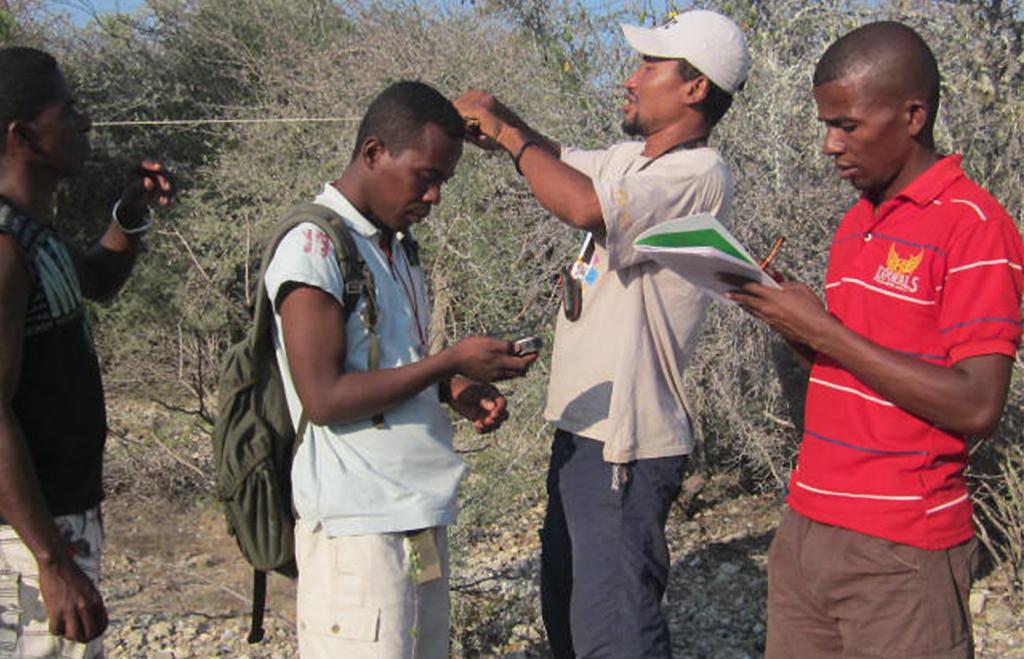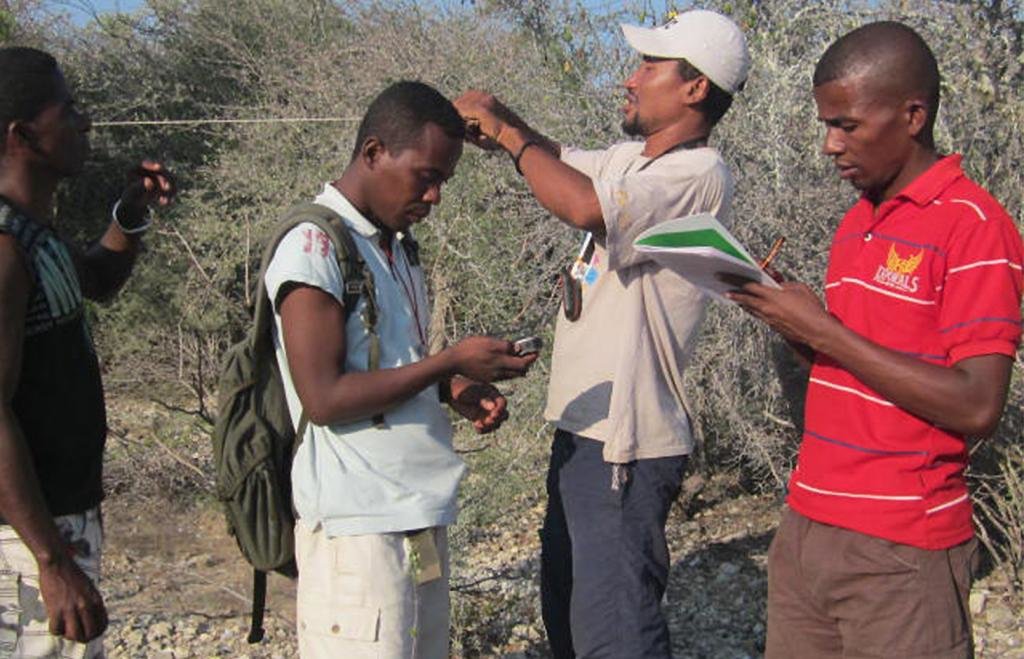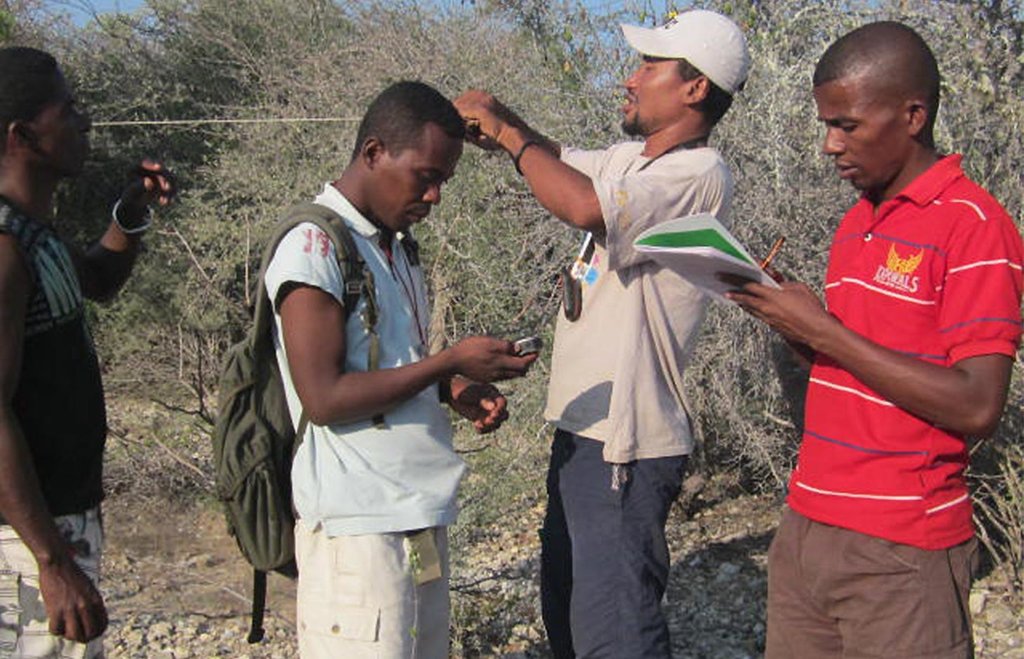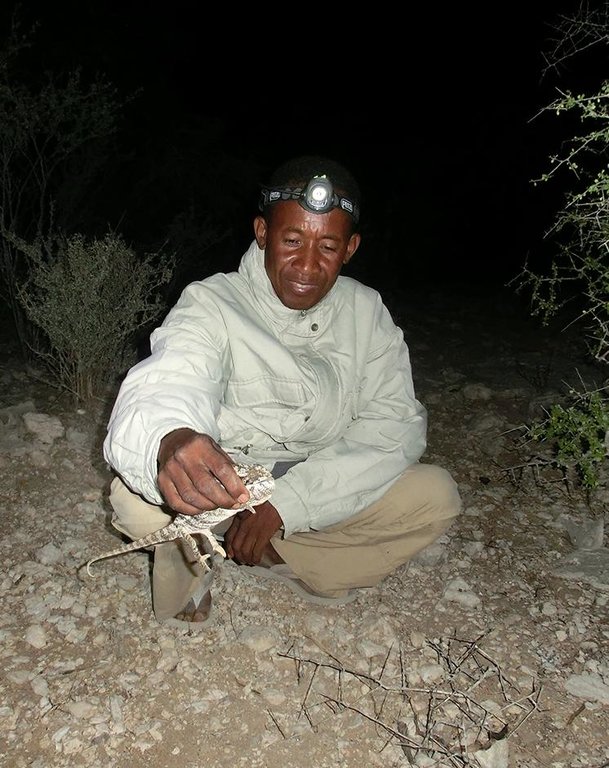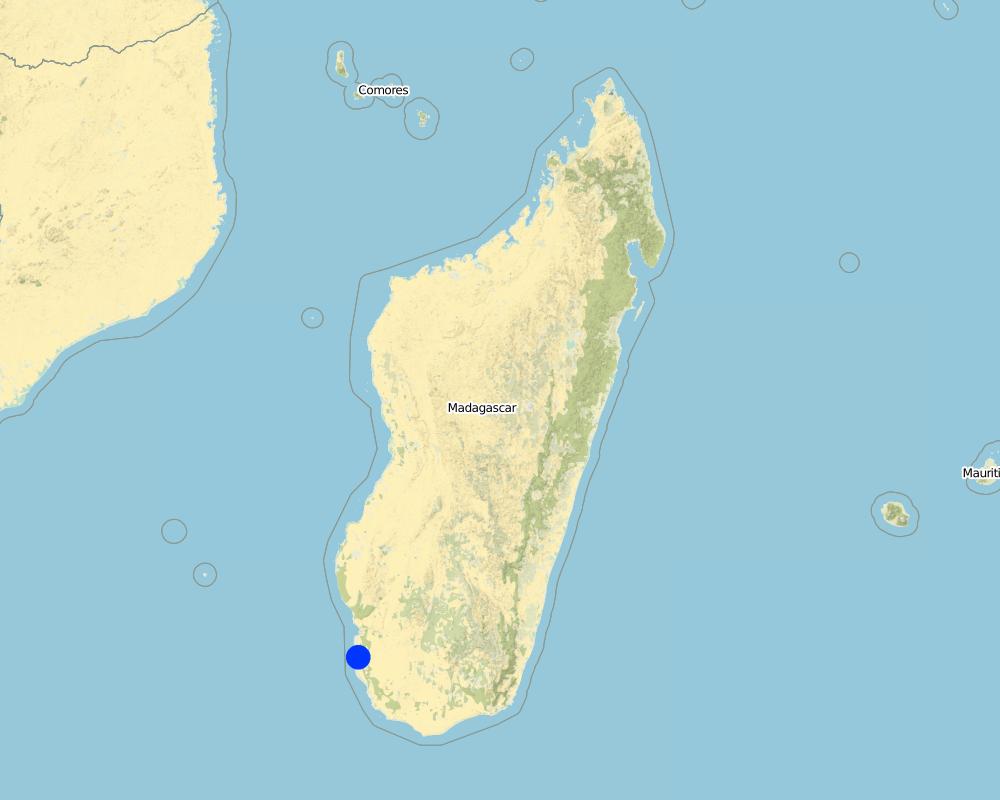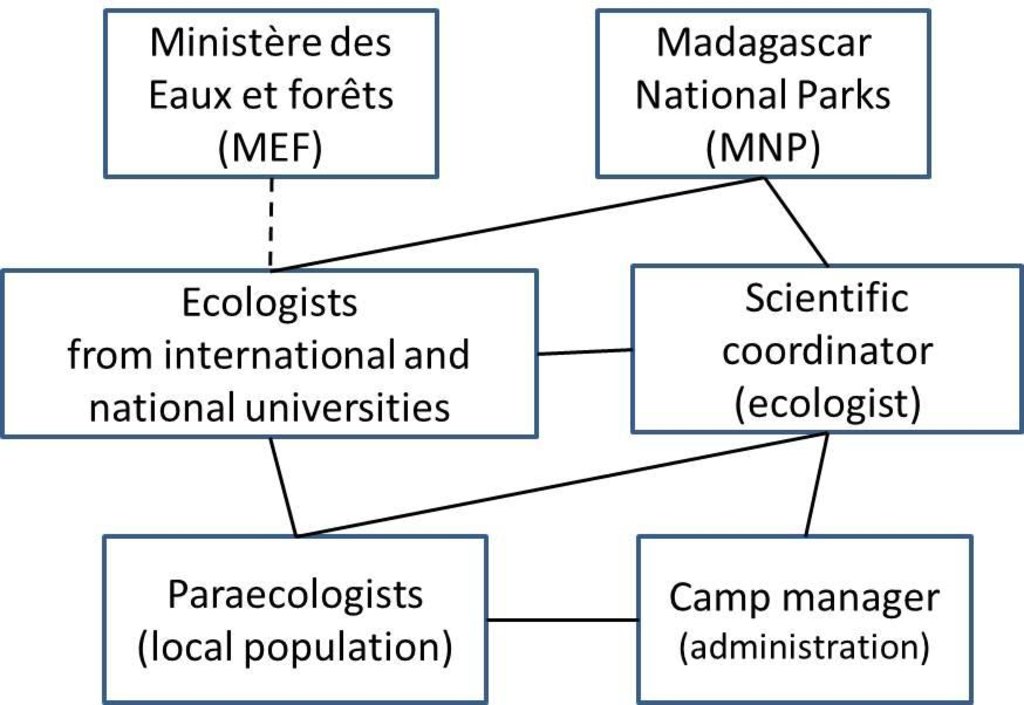Participatory monitoring and evaluation of long-term changes in ecosystems [Мадагаскар]
- Создание:
- Обновить:
- Составитель: Joachim Nopper
- Редактор: –
- Рецензенты: Fabian Ottiger, Deborah Niggli
approaches_2610 - Мадагаскар
Просмотреть разделы
Развернуть все Свернуть все1. Общая информация
1.2 Контактные данные специалистов и организаций, участвующих в описании и оценке Подхода
Специалист по УЗП:
Ratovonamana Yedidya R.
Université d'Antananarivo
Мадагаскар
Специалист по УЗП:
Ganzhorn Jörg U.
Universität Hamburg
Германия
Название проекта, содействовавшего документированию/оценке Подхода (если применимо)
Sustainable Landmanagement in south-western Madagascar (SuLaMa / GLUES)Название проекта, содействовавшего документированию/оценке Подхода (если применимо)
Book project: Making sense of research for sustainable land management (GLUES)Название организации (-ий), содействовавших документированию/оценке Подхода (если применимо)
Universität Hamburg (UHH) - ГерманияНазвание организации (-ий), содействовавших документированию/оценке Подхода (если применимо)
University of Antananarivo - Мадагаскар1.3 Условия, регламентирующие использование собранных ВОКАТ данных
Когда были собраны данные (на местах)?
11/04/2016
Составитель и ответственный/-ые специалист(-ы) согласны с условиями, регламентирующими использование собранных ВОКАТ данных:
Да
2. Описание Подхода УЗП
2.1 Краткое описание Подхода
Establishing a knowledge base and communication platform in collaboration with para-ecologists for monitoring changes in ecosystems, to aid decision-making in forest management.
2.2 Подробное описание Подхода
Подробное описание Подхода:
Aims / objectives: This approach strengthens knowledge about the response of biodiversity to environmental changes – namely land conversion, climate change induced impacts and climate-related extreme events, such as droughts and cyclones. Information generated can be used to inform regional authorities. They are then able to adapt management to current conditions, in order to better preserve biodiversity within the National Park. An important component of this approach is the integration of people from the local population as 'para-ecologists' who are trained in survey techniques for biodiversity monitoring. They directly observe changes in biodiversity, and share their knowledge with others in the area. The approach, thus, includes the sensitization of the local population to impacts of environmental change on biodiversity.
Methods: Under this approach, local assistants were trained in biodiversity monitoring techniques by researchers during their regular research activities. Part of the process comprised skills in species identification. Because the researchers had a limited period available for field work, training of these para-ecologists was a pre-requisite for implementation of long-term monitoring activities based on surveying at regular intervals. The surveys initiated by the researchers were plant phenology monitoring, regular capture, marking and recapture of Galidictis grandidieri (the giant striped mongoose) which is a flagship species in the Tsimanampesotse National Park, as well as reptile occurrence monitoring along transects. Monitoring procedures were established, and then continued by para-ecologists under the guidance of a Malagasy researcher who is familiar with ecological field work and acted as a ‘scientific coordinator’. The task of the scientific coordinator was data control and storage, planning of monitoring activities, as well as communication between national authorities, ecologists and para-ecologists. All survey data are available for scientific purposes and can be used to inform Malagasy authorities, or can be directly demanded by Malagasy authorities.
Stages of implementation: A basic research camp for monitoring was established within the Tsimanampesotse National Park in collaboration with Madagascar National Parks and WWF Toliara with third party funding. Four para-ecologists, two cooks and a guard constitute the team. The camp is maintained by a manager who is responsible for maintenance of buildings and electric facilities as well as provision of food. Surveying equipment is stored at the base camp. Computers and other necessary equipment were provided under the SuLaMa project. There are two para-ecologists trained on flora and a further two on fauna. Survey sites for monitoring of animal diversity and plant phenology were established by plant and animal ecologists in cooperation with the para-ecologists. Infrastructure for data acquisition and storage was established. This included the installation of electrical facilities as well as the provisioning of field books and computers. Technicians received language courses and learned computer operation. Regular exchange between the research camp and the national park authority, MNP, was established through a permanently employed scientific coordinator. This exercise resulted in a first workshop on survey techniques, in which staff of Madagascar National Park learned from researchers and para-ecologists.
Role of stakeholders: All survey data are available for scientific purposes and can be used to inform Malagasy authorities, or can be directly demanded from Malagasy authorities.
2.3 Фотографии, иллюстрирующие Подход
2.5 Страна/ регион/ место, где применялся Подход
Страна:
Мадагаскар
Административная единица (Район/Область):
Atsimo-Andrefana (South-West Madagascar)
Более точная привязка места:
Beheloke
Map
×2.6 Даты начала и окончания реализации Подхода
Год начала реализации:
2011
Год окончания (Если Подход больше не применяется):
2016
2.7 Тип Подхода
- в рамках проекта/ программы
2.8 Каковы цели/ задачи Подхода
The Approach focused mainly on SLM with other activities (raising environmental awareness, environmental education)
Collect data on biodiversity to increase understanding of environmental change impacts. Use of this data to inform conservation managers. Involve the local population in this process to raise awareness and create ownership.
The SLM Approach addressed the following problems: Lack of knowledge about the changes in biodiversity within the national park; inadequate expertise in animal and plant identification; lack of knowledge about standardized sampling methods; data storage and dissemination not established.
2.9 Условия содействующие применению Технологии/ Технологий в рамках Подхода или затрудняющие его
Социальные/ культурные/ религиозные нормы и ценности
- затрудняют
language barrier
Treatment through the SLM Approach: employment of a French teacher
Осведомленность в области УЗП, доступность технической поддержки
- затрудняют
No housing and facilities for para-ecologists, no infrastructure for data entry and storage as well as storage of equipment
Treatment through the SLM Approach: Establishment of a research camp as the base for all monitoring activities; Establishment of a database for storage of survey data. Keeping of a copy by the scientific coordinator who is able to distribute the data to researchers.
Объем работ, доступность рабочей силы
- затрудняют
Due to different reasons surveys were occasionally cancelled.
Treatment through the SLM Approach: Data quality of monitoring programs suffers if
surveys are not conducted at regular intervals. To avoid the cancellation of surveys, two persons were trained in the same survey techniques, so that a replacement is available. Nevertheless, occasional cancellations could not be avoided.
3. Участие и распределение ролей заинтересованных сторон
3.1 Заинтересованные стороны, участвующие в реализации Подхода и их роли
- местные землепользователи/ местные сообщества
members of local population that gain knowledge on biodiversity
- ученые-исследователи
Para-ecologists are all men. Camp staff are equally divided between women and men. No woman occupied a top position however.
- общественные организации
MNP, WWF
- государственные власти (отвечающие за планирование или принятие решений)
MEEF
access to monitoring data and knowledge on status of biodiversity conservation effectiveness.
- международные организации
BMBF
Если участвовало несколько заинтересованных сторон, назовите ведущую организацию:
Researchers from different disciplines were involved. Scientific coordination was conducted by a Malagasy botanist.
3.2 Участие местных землепользователей/ местных сообществ на разных стадиях реализации Подхода
| Участие местных землепользователей/ местных сообществ | Перечислите участников и опишите их вовлеченность | |
|---|---|---|
| инициирование/ мотивация | внешняя поддержка | Training, identification of places for monitoring activities |
| планирование | нет | |
| выполнение | внешняя поддержка | Monitoring within the National Park, giving results of research to National Park staff |
| мониторинг/ оценка | нет | |
| Research | нет |
3.3 Схема реализации (если имеется)
Описание:
Key partners for a biodiversity monitoring programme in southwestern
Madagascar. Collaborative research is focussed in and around Tsimanampesotse National Park. Ecologists train para-ecologists and develop long term monitoring programs. Scientific coordinator collects data and communicates results to MNP. Para-ecologists conduct surveys, a camp manager ensures research equipment is available and coordinates maintenance.
3.4 Принятие решений по выбору Технологии/ Технологий УЗП
Было решение по выбору Технологии (-ий) принято:
- by researchers
Поясните:
Decisions on the method of implementing the SLM Technology were made by by reasearchers. n/a
4. Техническая поддержка, повышение компетенций и управление знаниями
4.1 Повышение компетенций/ обучение
Проводилось ли обучение землепользователей/ других заинтересованных лиц?
Да
- local population
Рассматриваемые темы:
Local men who were trained in animal and plant identification and survey techniques. They became specialists in their area of work and due to regular surveys, better understand the effects of environmental changes on plant phenology and the occurrence and behaviour of animals. They share their knowledge in their villages, thus contributing to raising awareness about the environment.
4.2 Консультационные услуги
Есть ли у землепользователей возможность получать консультации?
Да
Описание/ комментарий:
Advisory service is inadequate to ensure the continuation of land conservation activities
4.3 Институциональная (организационная) поддержка
В ходе реализации Подхода были ли организованы новые институциональные структуры или поддержаны уже существующие?
- нет
4.4 Мониторинг и оценка
Являются ли мониторинг и оценка частью Подхода?
Да
Комментарии:
technical aspects were ad hoc monitored by government through observations; indicators: data collection by paraecologists was observed by researchers during training phase
Control of data quality aspects were ad hoc monitored by project staff through observations
Regular data collection aspects were regular monitored by project staff through
There were no changes in the Approach as a result of monitoring and evaluation
There were no changes in the Technology as a result of monitoring and evaluation: n/a
4.5 Научные исследования
Были ли научные исследования частью Подхода?
Да
Укажите темы исследований:
- экология
Напишите подробнее и назовите тех, кто выполнял исследования:
Research was exclusively undertaken within the national park. Extension of research activities into non-protected areas is aspired in collaboration with the local communities.
Research was carried out on station
5. Финансирование и внешняя материальная поддержка
5.1 Годовой бюджет мероприятий по УЗП в рамках Подхода
Если точный годовой бюжет неизвестен, укажите примерный диапазон затрат:
- 10000-100000
Комментарий (например, основные источники финансирования/ ключевые доноры):
Approach costs were met by the following donors: international (German Ministry of Education and Research, BMBF): 100.0%
5.2 Финансирование и внешняя материальная поддержка, предоставляемая землепользователям
Предоставлялась ли землепользователям финансовая/ материальная поддержка для применения Технологии /Технологий?
Да
5.3 Субсидии на отдельные затраты (включая оплату труда)
- оборудование
| Укажите, какие ресурсы были субсидированы | В какой степени | Опишите субсидии подробнее |
|---|---|---|
| electric facilities and research equipment | профинансированы полностью | |
- строительные материалы
| Укажите, какие ресурсы были субсидированы | В какой степени | Опишите субсидии подробнее |
|---|---|---|
| construction & maintenance of research camp | профинансированы полностью | |
- инфраструктура
| Укажите, какие ресурсы были субсидированы | В какой степени | Опишите субсидии подробнее |
|---|---|---|
| cart | профинансированы полностью | |
Если труд землепользователя был существенным вкладом, укажите, был ли этот вклад:
- за денежное вознаграждение
Комментарии:
Monthly salary for para-ecologists, as well as staff of research camp.
Research equipment included among others Computers, torches, GPS units, cameras. A cart was needed to transport persons and material.
5.4 Кредитование
Предоставлялись ли в рамках Подхода кредиты на мероприятия УЗП?
Нет
6. Анализ влияния и заключительные положения
6.1 Влияние Подхода
Сумел ли Подход помочь землепользователям внедрить и поддерживать технологии УЗП?
- Нет
- Да, немного
- Да, умеренно
- Да, существенно
This approach is to evaluate long-term impacts of land conversions, gradual climate change and climate-related extremes (disasters) on biodiversity. Due to insufficient data because of the short time since implementation, impacts have not yet been assessed.
Сумел ли Подход расширить возможности социально и экономически уязвимых групп?
- Нет
- Да, немного
- Да, умеренно
- Да, существенно
By providing employment for some local people.
Did other land users / projects adopt the Approach?
- Нет
- Да, немного
- Да, умеренно
- Да, существенно
Community-based monitoring is on the rise in Madagascar.
Did the Approach lead to improved livelihoods / human well-being?
- Нет
- Да, немного
- Да, умеренно
- Да, существенно
Para-ecologist and associated staff of the research camp were continuously employed; a job opportunity that is rarely encountered within the study region. Awareness of the value of biodiversity has been raised.
Did the Approach help to alleviate poverty?
- Нет
- Да, немного
- Да, умеренно
- Да, существенно
By providing employment for some local people.
6.2 Основные причины, побуждающие землепользователей внедрять УЗП
- материальное стимулирование/ субсидии
employment
- well-being and livelihoods improvement
regular salaries
6.3 Долгосрочная устойчивость мероприятий в рамках Подхода
Могут ли землепользователи самостоятельно (без внешней поддержки) продолжать применение того, что было реализовано в рамках Подхода?
- нет
Если нет или нет уверенности, объясните почему:
Data collection by members of the local population is only valuable if data are subsequently quality-assured, analysed and evaluated. Thus without support from researchers this approach is of no value.
6.4 Сильные стороны/ преимущества Подхода
| Сильные стороны/ преимущества/ возможности по мнению составителя или других ключевых специалистов |
|---|
| By employing people from villages surrounding the national Park in regular research activities as well as biodiversity monitoring, knowledge on dynamics of natural systems is experienced firsthand and can be transmitted to other members of the local population. This can be seen as an informal knowledge hub from which communities learn more about the ecosystem they live in. (How to sustain/ enhance this strength: Creating owenership might lead to a more sustainable resource use practice.) |
| Collecting data and knowledge to support evidence based decision making for biodiversity conservation (How to sustain/ enhance this strength: Maintain and carry forward the knowledge base and communication platform by ensuring funding ) |
6.5 Слабые стороны/ недостатки Подхода и пути их преодоления
| Слабые стороны/ недостатки/ риски по мнению составителя или ответственных специалистов | Возможные пути их преодоления/снижения? |
|---|---|
| Monitoring activities depend on continuous funding. Funding was provided by SuLaMa/BMBF. Efforts for a continuation of funding need to be undertaken throughout project implementation as well as after project has terminated. | The situation could be stabilized by mainstreaming monitoring activities in programs of in-country authorities, which is planned but has not yet been implemented. |
7. Справочные материалы и ссылки
7.1 Методы сбора/источники информации
- выезды на места, полевые обследования
- опросы землепользователей
Ссылки и модули
Развернуть все Свернуть всеСсылки
Нет ссылок
Модули
Нет модулей


